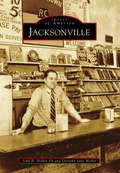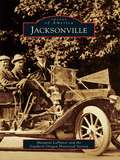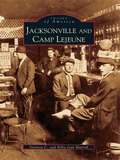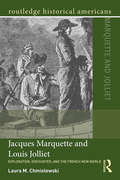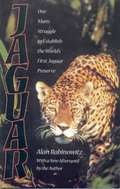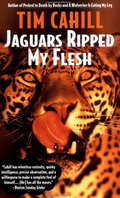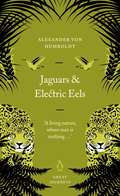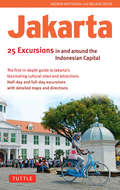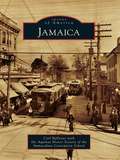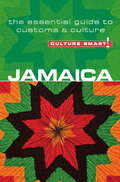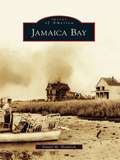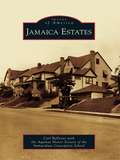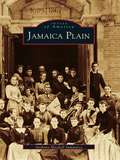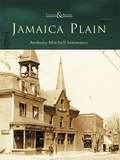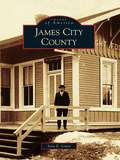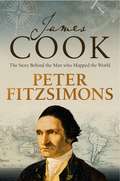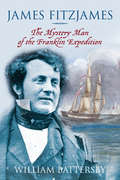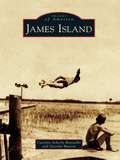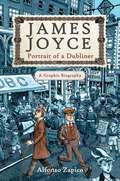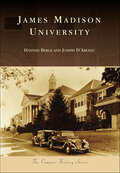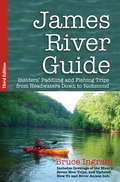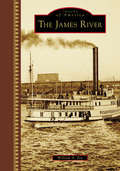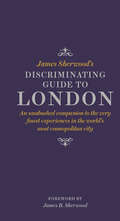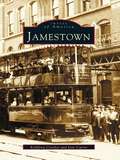- Table View
- List View
Jacksonville
by Dorothy Jane Nisbet John B. Nisbet IIIKnown as the "Gem of the Hills," Jacksonville is situated in the foothills of the Appalachian Mountains. After Andrew Jackson's victory over the Creek Indians in 1813-1814 and his negotiation of a treaty with the Creeks in 1832, this land was available for purchase from the Creek Indians as well as the US government. Several buildings on the town's central square predate the Civil War, and numerous antebellum houses and churches remain. Famous Civil War figures, including John Pelham and Gens. William and John Forney, came from Jacksonville. During the 20th century, a large cotton mill provided employment for the town's citizens and the starving sharecroppers from the surrounding mountains. What began as the State Normal School evolved into what is now Jacksonville State University.
Jacksonville
by Southern Oregon Historical Society Margaret LaplanteIt was the winter of 1851-1852 when the word "gold" echoed throughout the valley. Soon hundreds of gold miners flocked to Table Rock City, later renamed Jacksonville. In short order, families arrived and took out donation land claims and began farming, raising stock, and opening businesses. Many had already emmigrated from Europe, Canada, Ireland, and England. Jacksonville had its own Chinatown that was home to the many Chinese who had traveled far seeking their fortune through gold mining. When the railroad bypassed Jacksonville in 1883 in favor of the new town of Middleford, later renamed Medford, Jacksonville's fortunes reversed. During the ensuing decades, the town's buildings fell into disrepair. The threat of bulldozers leveling the downtown core in the late 1960s brought out a renewed interest in preservation. Today Jacksonville is a National Historic Landmark District and looks much as it did 150 years ago.
Jacksonville and Camp Lejeune
by Stratton C. Murrell Jean MurrellLocated near the North Carolina coast on the New River, Jacksonville is home to the U.S. Marine Corps Base Camp Lejeune. From the beginning, the people of Jacksonville have faced challenges brought on by the winds of nature and the winds of war in a poised and dignified manner, turning hardships to the betterment of the community. Such changes have encouraged population and tourist growth, as well as physical expansion of the city, thus creating a booming area that still manages to maintain the charm and hospitality of a small Southern town. Jacksonville and Camp Lejeune revisits the era when Jacksonville was just a fledgling community, when tobacco barns and warehouses dotted the landscape and ferries and fishing boats forged the New River. The townspeople looked to agriculture, shipping, naval stores, lumbering, hunting, fishing, and political involvement to occupy their interests and energies, while hurricanes and wars loomed in the world beyond. Few people in those times could have imagined that a hurricane would make Jacksonville the county seat of Onslow County or that the world at war would result in the population expansion of the 1940s and the 1950s. With the building of the Marine base, which brought about enormous social change for the residents, the city attracted construction workers, young families, and service men and women who paved the way for today's "rural metropolis."
Jacques Marquette and Louis Jolliet: Exploration, Encounter, and the French New World (Routledge Historical Americans)
by Laura M. ChmielewskiIn this succinct dual biography, Laura Chmielewski demonstrates how the lives of two French explorers – Jacques Marquette, a Jesuit missionary, and Louis Jolliet, a fur trapper – reveal the diverse world of early America. Following the explorers' epic journey through the center of the American continent, Marquette and Jolliet combines a story of discovery and encounter with the insights derived from recent historical scholarship. The story provides perspective on the different methods and goals of colonization and the role of Native Americans as active participants in this complex and uneven process.
Jaguar: One Man's Struggle To Establish The World's First Jaguar Preserve
by Alan RabinowitzIn 1983, zoologist Alan Rabinowitz ventured into the rain forest of Belize, determined to study the little-known jaguar in its natural habitat and to establish the world's first jaguar preserve. Within two years, he had succeeded. <P><P>In Jaguar he provides the only first-hand account of a scientist's experience with jaguars in the wild. <P><P>Originally published in 1986, this edition includes a new preface and epilogue by the author that bring the story up to date with recent events in the region and around the world.
Jaguars Ripped My Flesh
by Tim CahillThe author of A Wolverine Is Eating My Leg and Pecked to Death by Ducks gives new meaning to the words "going to extremes" in this exhilarating--and frequently hilarious--collection of adventure travel writing. "Cahill . . . (writes) with the precision ofJohn McPhee and Joan Didion tempered by a Monty Pythonesque sense of the absurd."--San Diego Union-Tribune.From the Trade Paperback edition.
Jaguars and Electric Eels (Great Journeys Ser.)
by Alexander von HumboldtA great, innovative and restless thinker, the young Humboldt (1769-1859) went on his epochal journey to the New World during a time of revolutionary ferment across Europe. This part of his matchless narrative of adventure and scientific research focuses on his time in Venezuela - in the Llanos and on the Orinoco River - riding and paddling, restlessly and happily noting the extraordinary things on every hand.Great Journeys allows readers to travel both around the planet and back through the centuries – but also back into ideas and worlds frightening, ruthless and cruel in different ways from our own. Few reading experiences can begin to match that of engaging with writers who saw astounding things: Great civilisations, walls of ice, violent and implacable jungles, deserts and mountains, multitudes of birds and flowers new to science. Reading these books is to see the world afresh, to rediscover a time when many cultures were quite strange to each other, where legends and stories were treated as facts and in which so much was still to be discovered.
Jakarta: 25 Excursions in and Around the Indonesian Capital
by Melanie Wood Andrew WhitmarshLinking over 500 activities and attractions into 25 half-day and full-day excursions, this is the first in-depth book on Jakarta that tells you exactly where to go, what to do and how to get there in order to maximize your enjoyment of the city.
Jakarta: 25 Excursions in and Around the Indonesian Capital
by Melanie Wood Andrew WhitmarshLinking over 500 activities and attractions into 25 half-day and full-day excursions, this is the first in-depth book on Jakarta that tells you exactly where to go, what to do and how to get there in order to maximize your enjoyment of the city.
Jamaica (Images of America)
by Carl Ballenas Aquinas Honor Society of the Immaculate Conception SchoolJamaica, Queens, has long occupied a commanding position in the political, social, and industrial life of Queens County. Indigenous people created a trail, used by various tribes to trade furs and other goods, through the woods that later became Jamaica Avenue, the main street of the village. Jamaica was witness to the evolution of change, receiving a charter from Dutch governor Peter Stuyvesant in 1656, becoming an English colony in 1664, and winning freedom in the American Revolution with the Jamaica Minutemen. The area is richly steeped in history: George Washington slept here; and Walt Whitman, Susan B. Anthony, Rufus King, Jacob Riis, and many more have left their mark on Jamaica. Jamaica is an astounding visual journey documenting the unique history of this remarkable community over more than 350 years.
Jamaica - Culture Smart!
by Nick DavisLaid back, sun-drenched tropical paradise, or hotbed of drug-related crime and violence? Neither stereotype is true. Jamaica suffers from a PR problem, created largely by tabloid headlines written thousands of miles away. The reality is more complex and more fascinating. Despite its small size, Jamaica punches above its weight. It's footprints in sport and music are, like its people, larger than life. It is one of the few countries to have its own soundtrack-- mento, ska, and reggae are popular around the world. The University of the West Indies campus at Mona is a regional source of excellence. Jamaicans have a fire that has been hard to douse. It was burning when their forefathers arrived on slave ships, barely alive after the middle passage, and it was there when they fought the British to a standstill in the Maroon Wars. In the English-speaking Caribbean they have a reputation for being brash, but the Jamaicans have a warmth that is unmatched. They are unafraid to talk to strangers, they'll laugh at nearly anything, they'll discuss and debate with passion, and they'll let you know it straight. Despite real economic and social problems, this beautiful and invigorating country regularly ranks among the top five happiest nations in the world in the annual Happy Planet Index. Culture Smart! Jamaica takes you beyond the clichés with a fresh, uniquely well-informed look at of one of the most intriguing countries in the region.
Jamaica Bay (Images of America)
by Daniel M. HendrickFor more than two centuries after the Dutch settled its meandering shores, Jamaica Bay was little more than a watery expanse broken by small islands and a handful of mills. Rapid growth after the Civil War transformed the bay into a microcosm of a developing nation, as meadows gave way to houses and factories, and giant steamers and locomotives appeared. Plans to create the world's largest deepwater port here were never realized, yet Jamaica Bay did emerge as a hub for aviation; the first successful transatlantic flight departed over the bay-followed by millions of flights that have taken off from John F. Kennedy International Airport ever since. Through historic photographs, Jamaica Bay illustrates the bay's transformation into a shellfishing haven, a recreational playground with hotels and casinos, and now the focus of a longterm environmental rehabilitation.
Jamaica Estates
by Carl Ballenas Aquinas Honor Society of the Immaculate Conception SchoolThe Jamaica Estates community evolved with the advent of the 20th century. The verdant hills north of the colonial village of Jamaica were blanketed with forests of deciduous trees and dotted with crystal clear glacial lakes. The area's country beauty and tranquility offered people an escape from the congestion of the crowded city. As the Queensborough Bridge neared completion in 1907, two wealthy real estate speculators, Ernestus Gulick and Felix Isman, envisioned a unique community. Together they imagined a residential park offering people the ability to have homes in an area of breathtaking country beauty while working in the city.
Jamaica Plain: Then And Now (Images of America)
by Anthony Mitchell SammarcoJamaica Plain: Then & Now is a fascinating photographic history of a Boston neighborhood once referred to as the "Eden of America." At one time a part of Roxbury and later West Roxbury, Jamaica Plain was annexed to the city of Boston in 1874. During the next five decades, the neighborhood expanded due to the railroad and streetcars and became known as one of the "streetcar suburbs." In this lavishly illustrated book, vintage images placed alongside contemporary photographs show well-known buildings and streetscapes as they once were and as they appear today. Included are Jamaica Pond, with its icehouses, and the area of Forest Hills, with the elevated line and streetcars, as well as schools, places of worship, and homes.
Jamaica Plain: Then And Now (Then and Now)
by Anthony Mitchell SammarcoJamaica Plain: Then & Now is a fascinating photographic history of a Boston neighborhood once referred to as the "Eden of America." At one time a part of Roxbury and later West Roxbury, Jamaica Plain was annexed to the city of Boston in 1874. During the next five decades, the neighborhood expanded due to the railroad and streetcars and became known as one of the "streetcar suburbs." In this lavishly illustrated book, vintage images placed alongside contemporary photographs show well-known buildings and streetscapes as they once were and as they appear today. Included are Jamaica Pond, with its icehouses, and the area of Forest Hills, with the elevated line and streetcars, as well as schools, places of worship, and homes.
James City County (Images of America)
by Sara E. LewisBeyond museum restorations at Jamestown and neighboring Williamsburg, the history of America's first county is largely unknown to many who visit or live nearby. However, they see and read a multitude of street, neighborhood, and business names that bear silent witness to the county's history. Founded in 1634 atop ancient Algonquin Indian territory, the locality was first made up of plantations and small farms occupied by Europeans and Africans. As they spread out from "James Citie," immigrants sited themselves near rivers and creeks. Waterways provided the earliest transportation network, but interior road maintenance was key to further development of commerce and community. After the Civil War, James City County's population was concentrated along the Toano-Norge-Lightfoot corridor. Communities blossomed along an ancient footpath that followed the Virginia Peninsula's spine. In the 1880s, the railroad paralleled a portion of it, and motorcars followed, making Richmond Road the county's primary thoroughfare. Other community centers included Diascund, Croaker, Chickahominy, Centerville, and Grove.
James Cook: The story behind the man who mapped the world
by Peter FitzSimonsThe name Captain James Cook is one of the most recognisable in Australian history - an almost mythic figure who is often discussed, celebrated, reviled and debated. But who was the real James Cook?This Yorkshire farm boy would go on to become the foremost mariner, scientist, navigator and cartographer of his era, and to personally map a third of the globe. His great voyages of discovery were incredible feats of seamanship and navigation. Leading a crew of men into uncharted territories, Cook would face the best and worst of humanity as he took himself and his crew to the edge of the known world - and beyond.With his masterful storytelling talent, Peter FitzSimons brings the real James Cook to life. Focusing on his most iconic expedition, the voyage of the Endeavour, where Cook first set foot on Australian and New Zealand soil, FitzSimons contrasts Cook against another figure who looms large in Australasian history: Joseph Banks, the aristocratic botanist. As they left England, Banks, a rich, famous playboy, was everything that Cook was not. The voyage tested Cook's character and would help define his legacy.Now, 240 years after James Cook's death, FitzSimons reveals what kind of man James was at heart. His strengths, his weaknesses, his passions and pursuits, failures and successes.James Cook reveals the man behind the myth.
James Fitzjames: The Mystery Man of the Franklin Expedition
by William BattersbyJames Fitzjames was a hero of the early nineteenth-century Royal Navy. A charismatic man with a wicked sense of humour, he pursued his naval career with wily determination. When he joined the Franklin Expedition at the age of 32 he thought he would make his name. But instead the expedition completely disappeared and he never returned. Its fate is one of history’s last great unsolved mysteries, as were the origins and background of James Fitzjames – until now. Fitzjames packed a great deal into his thirty-two years. He had sailed an iron paddle steamer down the River Euphrates and fought with spectacular bravery in wars in Syria and China. But Fitzjames was not what he seemed. He concealed several secrets, including the scandal of his birth, the source of his influence and his plans for after the Franklin Expedition. In this first complete biography of the captain of the HMS Erebus, William Battersby draws extensively on Fitzjames’ personal letters and journals – most never published before – as well as official naval records, to strip away 200 years of misinformation and half-truths and enables us to understand for the first time this intriguing man and his significance for the Franklin Expedition.
James Island (Images of America)
by Geordie Buxton Carolyn Ackerly BonstelleOn April 12, 1861, Confederate forces at Fort Johnson fired upon Federal-occupied Fort Sumter in Charleston Harbor, etching James Island's name in American history as the starting place of the War Between the States. The island was a battleground for war skirmishes, live oak-laden property that housed antebellum plantations, fertile soil that yielded sea island cotton, precious land that enslaved so many, and a rural planting community existing in the shadow of Charleston. More than this, though, James Island was and is a beloved home to generations of proud families and individuals. This South Carolina sea island, which once flourished and folded under the bondage of slavery, is now a place where all races live and celebrate its rich heritage. The Gullah culture and language thrive and are treasured here, as are the Southern traditions of the original planters and their descendants.
James Joyce: Portrait of a Dubliner—A Graphic Biography
by Alfonso ZapicoA dazzling, prize-winning graphic biography of one of the world's most revered writers. Winner of Spain's National Comic Prize and published to acclaim in Ireland, here is an extraordinary graphic biography of James Joyce that offers a fresh take on his tumultuous life. With evocative anecdotes and hundreds of ink-wash drawings, Alfonso Zapico invites the reader to share Joyce's journey, from his earliest days in Dublin to his life with his great love, Nora Barnacle, and their children, and his struggles and triumphs as an artist. Joyce experienced poverty, rejection, censorship, charges of blasphemy and obscenity, war, and crippling ill-health. A rebel and nonconformist in Dublin and a harsh critic of Irish society, he left Ireland in self-imposed exile with Nora, moving to Paris, Pola, Trieste, Rome, London, and finally Zurich. He overcame monumental challenges in creating and publishing Dubliners, Portrait of an Artist as a Young Man, Ulysses, and Finnegan's Wake. Along the way, he encountered a colorful cast of characters, from the Irish nationalists Charles Parnell and Michael Collins to literary greats Yeats, Proust, Hemingway, and Beckett, and the likes of Carl Jung and Vladimir Lenin.
James Madison University (Campus History)
by Hannah BergeAnyone strolling through James Madison University's bucolic Bluestone area, which is grounded by the iconic Wilson Hall, will feel the educational journeys of past students resonating through the air. Founded in 1908 as a women's college, James Madison University was originally called the State Normal and Industrial School for Women at Harrisonburg and had an opening enrollment of 150 students. Since then, James Madison University has undergone several name changes and has a current enrollment of over 20,000 students. "The Madison Experience" is one that involves a commitment to learning and a fun and open spirit. This retelling of campus history seeks to capture some of the defining moments and cherished memories that have shaped so many Dukes.
James River Guide: Insiders' Paddling and Fishing Trips from Headwaters Down to Richmond
by Bruce IngramThe James River is Virginia's premier river for recreation, and the James River Guide is the key to enjoying it, whether you are an angler, kayaker, rafter, or bird watcher. Twenty-nine locator maps provide vital information on the river, all the way from its headwaters near Iron Gate to the dramatic fall line at Richmond. The longest river in the Old Dominion, the James offers some of the best smallmouth bass fishing in the state. Spring blossoms, fall color, and the fascinating history of the bateaux era canals lend the James a unique charm. There is something for everyone. River runners will face everything from placid stretches of calm water to white-water rapids that should only be tackled by the most experienced paddler. This edition includes updated and expanded information on favorite float trips, including new coverage of the marvelous Maury River, the main tributary of the Upper James; favorite fishing spots; updated access points; classic fishing lures; and directories of river guides and other resources. "Great news for river rats and nature lovers who want to deepen their knowledge of home waters. Bruce Ingram’s companionable river guides have been updated. Now in their third incarnation, the guides contain new, expanded information on float trips, fishing spots, angling techniques and lures, access points, portaging hints, and bird-watching tips. Best of all, readers reap the benefits of Ingram’s outdoor wisdom and advice." -- Virginia Wildlife
James River, The
by William A. FoxIn 2007, House Resolution 16 of the 110th Congress named the James River as "America's Founding River." The first permanent English settlement in the New World was made on the banks of the James at Jamestown in 1607, and representative government in America began there in 1619. The river runs for 340 miles entirely in Virginia, from the Allegheny Mountains to Hampton Roads and the Chesapeake Bay. Canal boats, steamboats, and railroads made it a mainstream of commerce and communication for the growing state. While the river's scenic views have remained relatively unchanged since 1607, there is still much to discover along its length through 20 counties, three major cities, and numerous small towns on its way to the sea. With more than 200 images, The James River seeks to raise awareness about this great river and its history while helping to protect and preserve it for the future.
James Sherwood's Discriminating Guide to London
by James SherwoodThe discerning traveler's guide to the very finest experiences that London has to offer James Sherwood, author of a number of definitive publications on English sartorial style, is the quintessential man-about-town. In this witty, opinionated, and discerning guide to London, he draws on many years of partaking in the very best that the metropolis has to offer. Whether you want to breakfast like a king, drink cocktails in the company of sophisticated British personalities, or shop for antique jewelry, this handy volume will take you there. Beautifully packaged and produced, with stylish line illustrations, James Sherwood’s Discriminating Guide to London includes information, advice, and a sardonic wit not to be found elsewhere. Sherwood’s supreme taste coupled with his firsthand knowledge of some of the most exclusive, exciting spots in London makes this guide a must-have for city slickers and jet setters alike. James Sherwood’s Discriminating Guide to London is inspired by a 1970s publication of the same name by another James Sherwood (no relation) who is today the owner of the Orient-Simplon Express and luxury hotels and restaurants around the world. The older Sherwood contributes a foreword to this new guide.
Jamestown
by Jane Currie Kathleen CrockerCity founder James Prendergast and other industrious pioneers were drawn to the outlet of Chautauqua Lake in southwestern New York State because of its abundant waterpower and virgin forests. The skills of these settlers, coupled with the area's natural resources, led to the emergence of industrial Jamestown, known worldwide for its diverse manufacture of quality products, including furniture, metal, and textiles. The authors have chosen more than two hundred vintage images based on historic markers for Jamestown. Thorough research and oral histories reveal contributions made by trailblazing immigrants, philanthropic families, diverse ethnic groups, earnest businessmen, and three hometown notables who achieved global fame: Lucille Ball, Roger Tory Peterson, and Robert H. Jackson.
